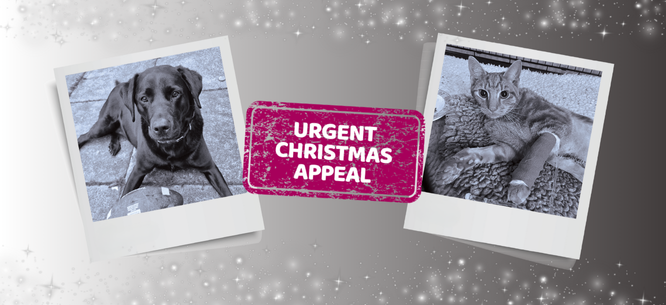Hot spots (acute moist dermatitis) in dogs
What is a hot spot?
A hot spot (‘acute moist dermatitis’) is an area of inflamed, infected skin. Hot spots are typically damp, red, smelly, sore, and sometimes have a scab on top. They often begin as something minor, such as an insect bite or graze, then become inflamed and infected when rubbed, licked or nibbled. Anything that causes a dog to chew or lick one particular area of their body can lead to a hot spot, for example:
Hot spots respond to treatment very well but can cause much more serious problems if they aren’t treated quickly.

Hot spot on a dog.
When to contact your vet
If you see a hot spot developing, Contact your vet straight away. It’s important to stop your dog (and other pets) licking or scratching the hot spot, even before you see your vet. The best way to do this is by using a buster collar, body suit or other protective device (such as a t-shirt).
Treatment
Treatment for a hot spot is likely to include:
- A clip and clean – clipping the fur around your dog’s hot spot will allow air to reach it and speed up recovery.
- Cleaning at home - daily cleaning with salty water or a medicated shampoo (see wound cleaning instructions below).
- Medication - such as steroids (to reduce inflammation), and antibiotics (to fight infection) - these may come as cream or tablets.
- It’s important to be aware that antibiotics aren’t necessary for every hot spot, your vet will advise what is best for your pet.
- Prevent licking/nibbling/scratching - you will need to stop your dog licking their hot spot by using a buster collar, protective body suit or an old t-shirt.
Prevention
The best way to prevent hot spots is to keep your dog’s skin as healthy as possible. Keep them up to date with their flea treatment and check their coat regularly. Seek veterinary advice as soon as you notice a hot spot or unhealthy skin.
Consider insuring your dog as soon as you get them, before any signs of illness start. This will ensure you have all the support you need to care for them.
Published: August 2020
Did you find this page useful?
Tell us more
Please note, our vets and nurses are unable to respond to questions via this form. If you are concerned about your pet’s health, please contact your vet directly.
Thank you for your feedback
Want to hear more about PDSA and get pet care tips from our vet experts?
Sign up to our e-newsletter
Written by vets and vet nurses. This advice is for UK pets only. Illustrations by Samantha Elmhurst.

